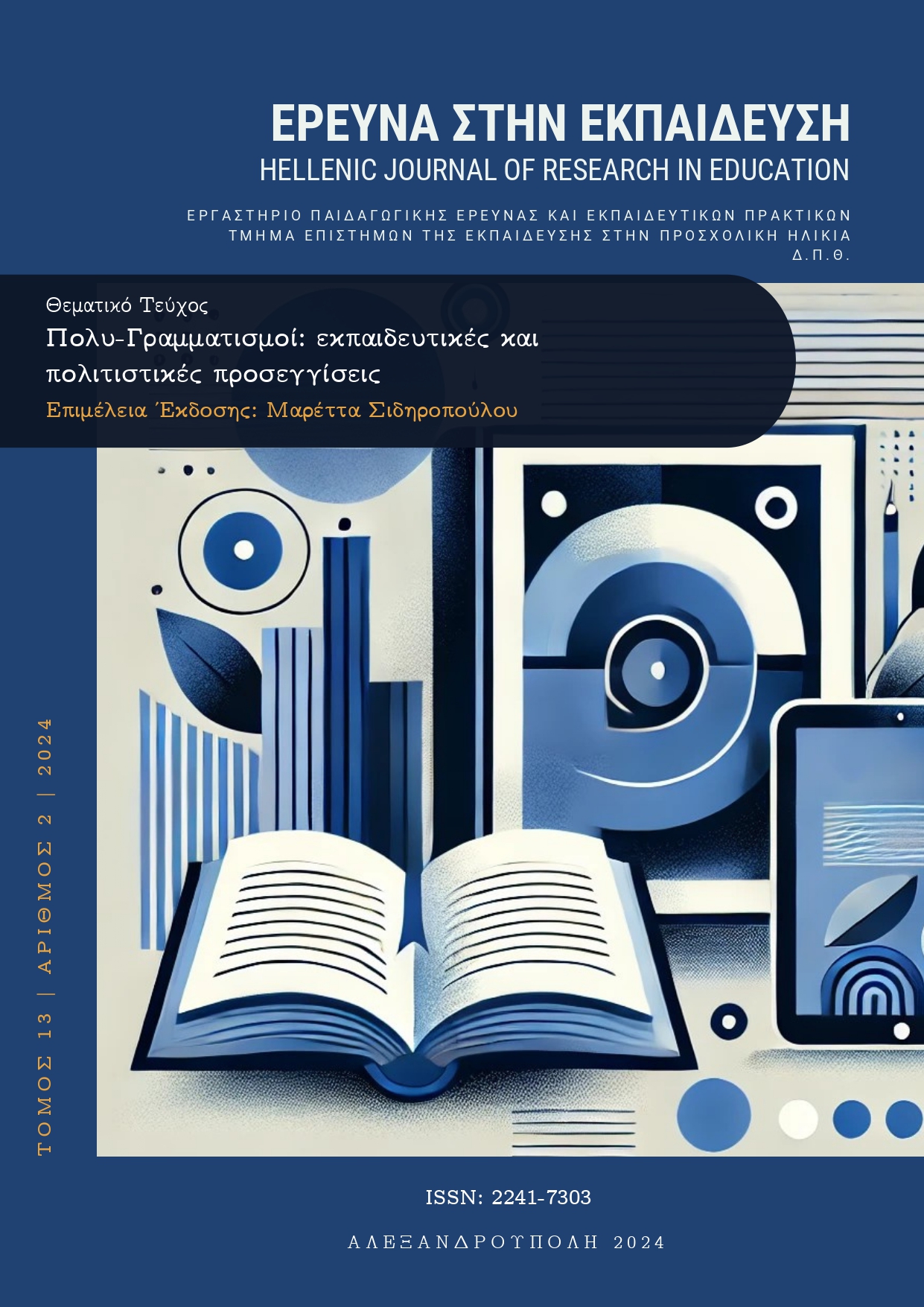Art as Literacy

Abstract
This paper examines art as a form of literacy and tries to explore the connection between art and the concepts of literacy and multiliteracies. It contrasts traditional approaches to literacy with contemporary considerations of multiliteracies and multimodal literacies, adopting a holistic and synthetic perspective on the contribution of art to the promotion of literacy and multiliteracies. Furthermore, art as a form of literacy represents a new paradigm for education, which has brought about substantial changes in the way we perceive education, intercultural understanding, life skills as well as the functions of culture.
Article Details
- How to Cite
-
Tsergas, N. (2024). Art as Literacy. Hellenic Journal of Research in Education, 13(2), 40–48. https://doi.org/10.12681/hjre.37652
- Section
- Articles

This work is licensed under a Creative Commons Attribution-NonCommercial-ShareAlike 4.0 International License.
Authors who publish with this journal agree to the following terms:
- Authors retain copyright and grant the journal right of first publication with the work simultaneously licensed under a CC-BY-NC-SA that allows others to share the work with an acknowledgement of the work's authorship and initial publication in this journal.
- Authors are able to enter into separate, additional contractual arrangements for the non-exclusive distribution of the journal's published version of the work (e.g. post it to an institutional repository or publish it in a book), with an acknowledgement of its initial publication in this journal.
- Authors are permitted and encouraged to post their work online (preferably in institutional repositories or on their website) prior to and during the submission process, as it can lead to productive exchanges, as well as earlier and greater citation of published work (See The Effect of Open Access).


